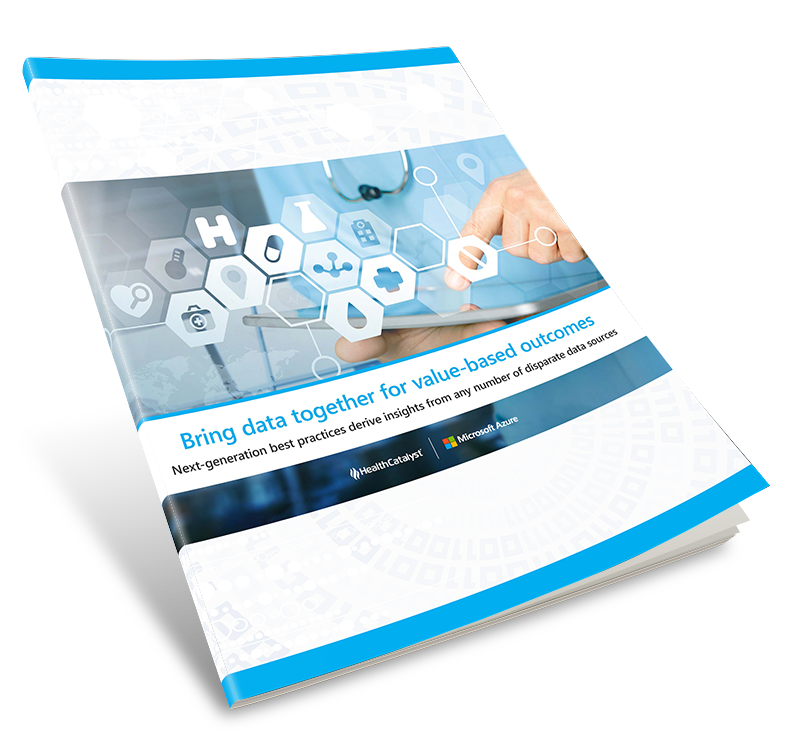While over 90 percent of organizations in industries worldwide now use cloud computing in their operations, healthcare still lags behind.
As health systems grow their ability to capture data, they still have only a fraction of the data they need to achieve today’s population health and precision medicine goals.
Organizations looking to migrate to more agile cloud-based platforms and leverage data for measurable improvements can learn the fundamentals of this critical transformation in an e-book about the Health Catalyst Data Operating System (DOS™).
 Download
Download

Even decades into the digital age, healthcare data is not yet living up to its promise. But it could. Over 90 percent of organizations in all kinds of industries worldwide now use cloud computing in their operations, but healthcare organizations lag behind. They are still unable to access and gain value from the data they collect. Even with the overwhelming amount of data being captured, at best, only a fragment of the data required for precision medicine and population health is captured in today’s EHRs.

This burgeoning complexity and scale make healthcare ripe for more flexible and nimble IT infrastructures. This is not theory—it has real business impact. According to a KPMG study, organizations realize an average 30 percent savings from the shift to an effective cloud environment.
A solid understanding of today’s cloud environment and solutions for navigating it will help healthcare leaders transition their organizations to a cloud-based platform that more effectively leverages their data for population health and precision medicine. As a primer on the Data Operating System (DOS™), the e-book, “Bring Data Together for Value-Based Outcomes,” describes how the platform brings healthcare organizations the benefits of a more flexible computing infrastructure in the cloud.
Key lessons include fresh approaches to the healthcare cloud, starting with the three essential organizational questions to ask before beginning the journey, and seven capabilities necessary to maximize an analytics investment, founded on deep Health Catalyst expertise in healthcare data and analytics technologies. Finally, Bring Data Together includes a data analytics capabilities assessment to pinpoint where an organization stands and determine the critical next steps.
To learn more about the keys to an effective cloud-based platform for healthcare, as well as the organizational analytics capabilities assessment, download the full e-book here.
*This e-book highlights the partnership between Health Catalyst and Microsoft and shows how our products work together to enhance value to customers.
Would you like to learn more about this topic? Here are some articles we suggest: